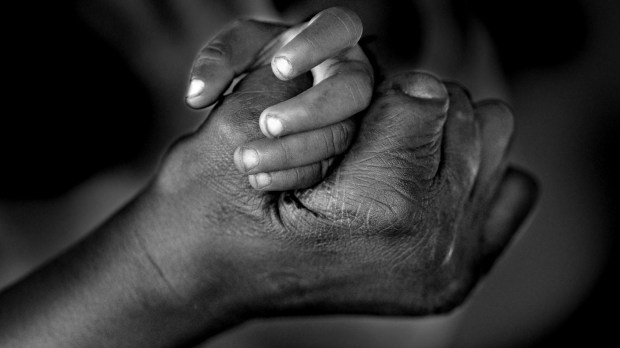One of them, realizing he had been healed, returned, glorifying God in a loud voice; and he fell at the feet of Jesus and thanked him.
—Luke 16:19-21
This Sunday, the liturgy presents us with two powerful lessons in gratitude as we hear of the miraculous healings of Naaman (in the First Reading) and of 10 lepers (in the Gospel). These stories remind us of God’s power to heal and restore our physical bodies. And yet, there’s more at work here. The healing and wholeness offered by God to these suffering men and women is really an expression of the desire that God has to restore not only the health of our bodies, but of the deeper, interior renewal that comes with faith.
As I was preparing this reflection, I was reminded of a story told by Doctor Paul Brand, a medical specialist in hands and tendons, about his visit to a compound for patients of Hansen’s disease (a leper colony) in India.
Shortly after his arrival, Doctor Brand quietly slipped into a community meeting, sitting on a mat behind the group in the courtyard. All around were smells of disease and decay, of cooking spices, and medical ointments. His eyes were drawn to the patients’ hands, most of which had missing or deformed fingers that were turned in—hands often described as “lepers’ claws.” Some of the patients were sitting on their hands or trying to keep them hidden.
When the patients realized Doctor Brand was there, they asked him to speak. So, moving to the center of the group, he began by saying, “I am a hand surgeon. So, when I meet people, I can’t help but look at their hands. [Palm readers claim] that they can look at your future by looking at your hands. I can tell your past. For instance, I can tell what your trade has been by the position of the callouses and the condition of the nails. I can tell a lot about your character. I love hands.”
His talk then took a slight turn: “How I would love to have had the chance to meet Christ,” he said, “and look at his hands. But knowing what he was like, I can almost picture them, feel them.”
He talked about the hands of Christ, beginning with infancy when his hands were small and helpless. Then came the hands of the boy Jesus, holding a stylus as he learned to write his letters. Then the hands of Christ the carpenter—rough, gnarled, with broken fingernails, and bruises from working with a saw and a hammer.
But there were also the hands of Christ the Healer. Compassion and sensitivity radiated from them and when he touched people, they could feel the Divine Spirit coming through.
“Then,” Doctor Brand continued, “there were the crucified hands. It hurts me to think of a nail being driven through the center of the hand, because I know what goes on there… the tendons and nerves and muscles… The thought of those healing hands being crippled reminds me what Christ was prepared to endure. In that act,” Doctor Brand said, “he identified himself with all of the deformed and crippled human beings in the world. Not only was he able to endure poverty with the poor, weariness with the tired, but—clawed hands with the crippled.”
The people were blown away by this idea: Jesus—a cripple, with claw-hands like theirs?
“And then there were his resurrected hands,” Doctor Brand concluded. “One of the things that I find most astounding is that, though we think of the future life as something perfected, when Christ appeared to his disciples he said, ‘Come, look at my hands.’… He carried the marks of suffering so he could continue to understand the needs of the suffering. He wanted to be forever one with us.”
As he finished, Doctor Brand looked around and saw the patients’ hands now lifted palm to palm in the Indian gesture of respect, Namaste. The hands were the same stumps, still missing fingers and resembling crooked claws. But the people weren’t hiding them anymore. They were held high, close to their faces, in respect for Brand, but also with a new pride and dignity.
In the end, this Sunday’s liturgy is reminding that the love of Christ has the power to heal and transform what is broken within us. Although we might never experience a miraculous, physical healing, grace is always available to us and Christ is always inviting to share our pain, sadness, and fears with him. As we reflect on this, offer a prayer of thanks for those times in your own life when you have experienced healing in your heart and soul.
In what ways do you need to be healed? What is broken within you that you can offer to Christ?
When have you experienced the healing power of Christ in your life?
How are your own experiences of grace and healing empowering you to reach out to others who are hurting or in need?
Words of Wisdom: “To say ‘Thank you’ is very human, very lovely.”—Cardinal Basil Hume, O.S.B.

